Tanzanite: Africa's Real Blue Diamond
By Ken Rock, MSDC Editor
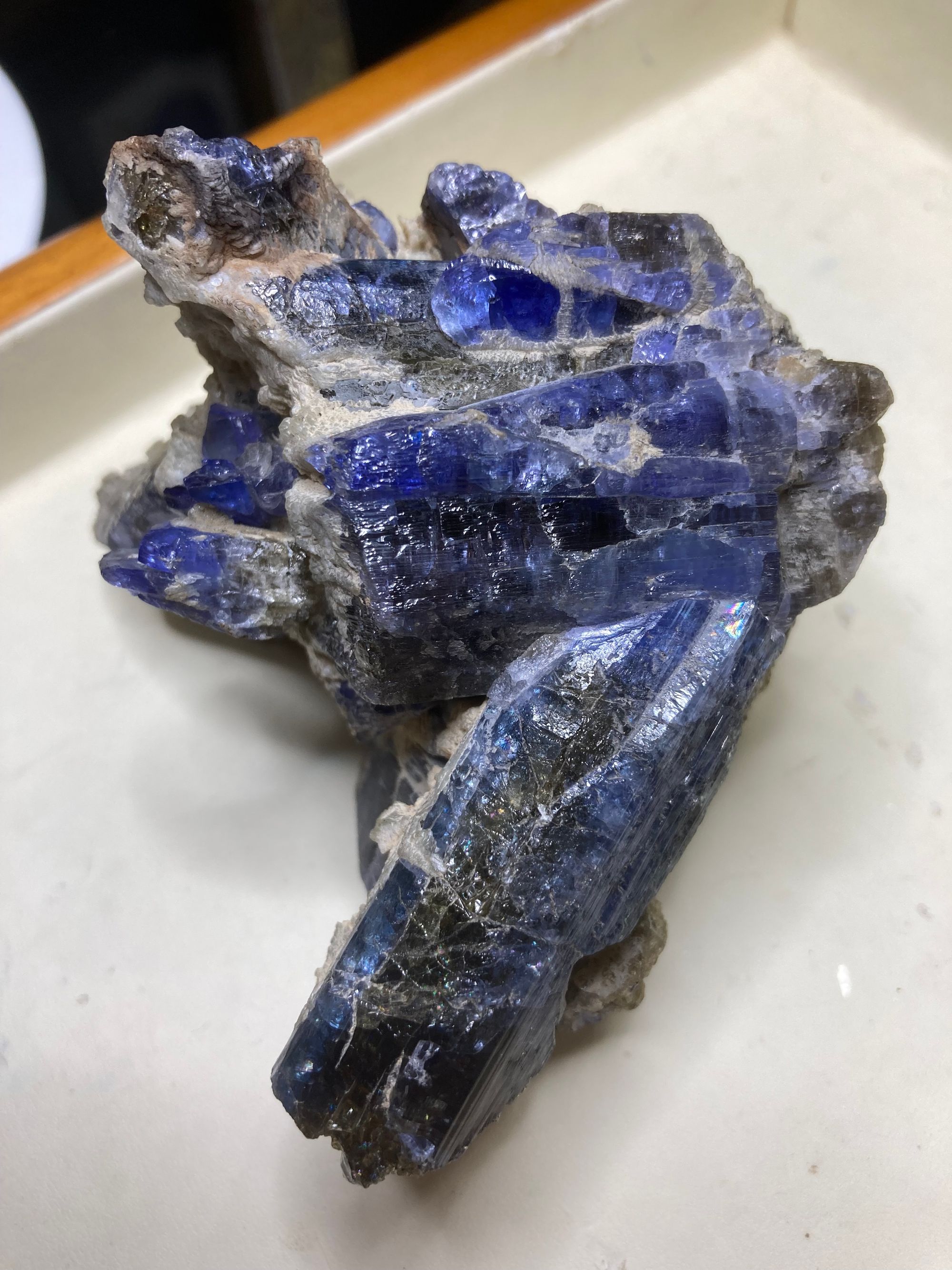
What is Tanzanite?
Tanzanite is a trade name that was first used by Tiffany and Company for gem-quality specimens of zoisite with a blue color. The scientific name of “blue-violet zoisite” was not thought to be consumer friendly enough by Tiffany’s marketing department which introduced it to the market in 1968.
The name "tanzanite" was given because the world's only known tanzanite deposit of commercial importance is in northern Tanzania. The name reflects the gem’s limited geographic origin. All of the mines are located in an area of about eight square miles in the Merelani Hills at the base of Mount Kilimanjaro, Africa's tallest peak, near the city of Arusha. Although it's been more than five decades since the gemstone hit the market, the Mount Kilimanjaro source in Tanzania is still the only place where all of the world's known commercial tanzanite production occurs.
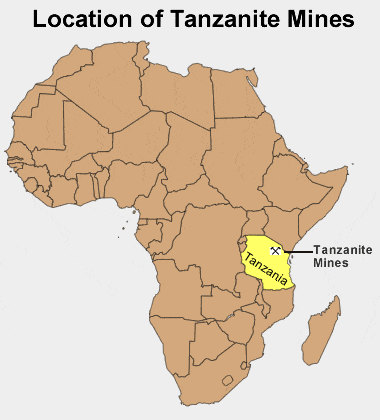
Tanzanite Geology and Mining
Tanzanite was formed around 585 million years ago by massive plate tectonic activity and intense heat in the area that would later give rise to Mount Kilimanjaro, a dormant volcano with three volcanic cones. It is not only the the highest mountain in Africa, but also highest single free-standing mountain in the world at 19,341 feet above sea level.
The mineral is found in a structurally complex geological environment with deposits typically occurring in the "hinge" of isoclinal folds. Gem-quality green grossular garnets, known as tsavorite, also are found in the area, as well as a variety of other rare minerals and gemstones, such as axinite, dravite, fluorapatite, prehnite, and tremolite.
Tanzanite is found in sausage-shaped formations, called boudins, pegmatitic veins that have become stressed and broken into smaller pieces. The tanzanite stones are found in small pockets inside the boudins. Not every boudin will produce tanzanite, and many that do, contain low-grade material not useful for jewellery.
Geological testing has shown that tanzanite layers exist thousands of feet below the ground. As mining levels drop deeper, increasingly sophisticated infrastructure is required to access the tanzanite, secure the shafts, provide air supply, ventilation, watering, and dewatering to ensure the safety of the mine workers, and allow tanzanite to be extracted safely and productively.

Processing and sorting takes place onsite. Rough tanzanite is sorted both manually and using a fully automated optical sorting/primary grading system -- a world first in the colored gemstone industry. There are various steps in the sorting process.
First, the gems are picked from the shaft, after which they are taken to the sorting house where they are cleaned and weighed. Next, non-gem materials are removed and the sorting process begins. Gems of good quality are taken away for grading by carat, clarity, and color while others are taken away to be sold as they are. The off-cuts or “waste” materials are collected to be sold locally. Finally, once all the grading and sizing procedures have taken place, the gems are packed and ready to be sold.
What Causes Tanzanite's Color?
The blue color of tanzanite is caused by small amounts of vanadium within the zoisite mineral structure. When vanadium-bearing zoisite is heated to a temperature of 600 degrees Celsius for about 30 minutes, the oxidation state of the vanadium is changed and that change causes (or enhances) the blue color.
The heat treatment of tanzanite is very mild when compared to what is often done for gems such as rubies and sapphires. Those gems can be heated to temperatures between 1,000 and 1,800 degrees Celsius and held at those temperatures for days or weeks.
Interestingly, most tanzanite does not display its vibrant color when mined. As much as 95 percent of the gems mined are heat-treated to achieve the blue color. Most tanzanite comes out of the earth with a brownish hue. Once heated to a brilliant blue, tanzanite's color is stable, so buyers do not need to worry that it will fade.
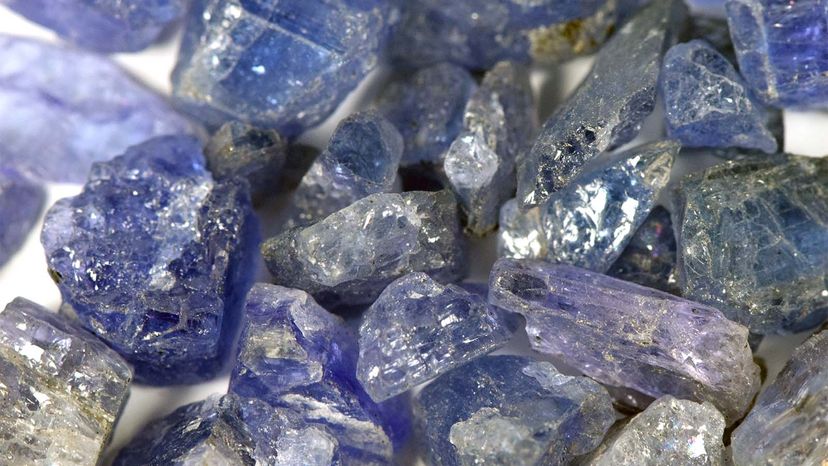
A small amount of untreated tanzanite with an excellent color is found in the mines. This naturally blue material gets its color from the heat of metamorphism without any treatment by people and is preferred by some buyers. An article on The Rare Gemstone Company's website has good photos of tanzanite before and after treatment and explains why the color change occurs.
On Moh's Hardness Scale, tanzanite falls in the 6 to 7 range, which makes it easier to scratch than diamonds (10), rubies and sapphires (9), or even quartz (7). With its softer nature and fair-to-poor toughness ranking, tanzanite is one of the more delicate gemstones. It's also sensitive to thermal shock — or sudden temperature changes.
Pleochroism in Tanzanite
Tanzanite is known for its remarkably strong pleochroism, appearing in turn blue, violet, and burgundy depending on the orientation of the crystal. The appearance of tanzanite also can vary depending on lighting conditions. When exposed to fluorescent light the blues become more visible, and when viewed under incandescent lighting, the violet hues can be readily seen. A reddish brown to clear coloration is typical of tanzanite in its natural state. It needs heat treatment to dissolve the brownish “veil” to bring out the stone’s blue violet coloration.
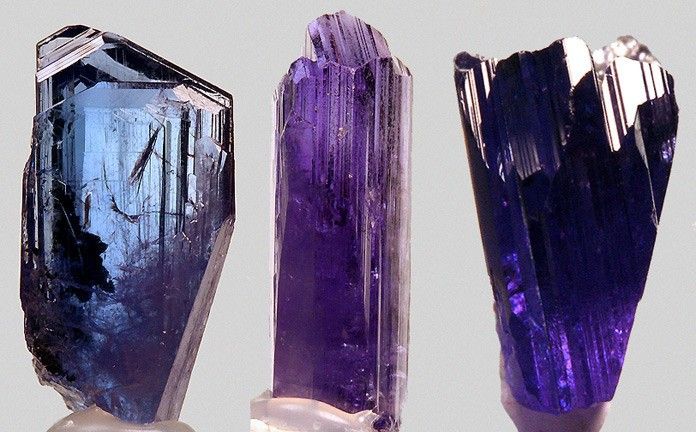
The three photos above show the same single crystal of tanzanite viewed from different crystallographic directions. They display the pleochroic properties of the gem. Pleochroism occurs when a gem appears to be different colors when viewed from different crystallographic directions. This specimen is trichroic -- it appears to be different colors from different directions. Looking at the broad side of the crystal, the gem has an attractive blue color. When viewed from the narrow side, the specimen is deep violet. And, when viewed down the vertical axis with illumination below, it exhibits a reddish color. This specimen has not been heated. Heating could strengthen the blue color and reduce the pleochroic effect. A more detailed explanation may be found in a short video here.
Tanzanite occurs in a wide range of tones and saturations that compete well with sapphire, blue topaz, and aquamarine.
Because the blue color is usually located on the short axis of the crystal, it’s often more difficult to cut a large, predominantly blue gem. Cutters have to decide whether to cut a large, predominantly violet gem or a smaller blue one. As a result, tanzanites that are blue face-up are rarer than those that are predominantly violet.
How Does Its Value Compare to Diamonds and Sapphires?
Although tanzanite is rarer than both diamonds and sapphire, it commands a lower price on the market. One reason might be the durability factor; tanzanite is only "reasonably durable." As noted earlier, tanzanite, with a hardness of 6 to 7, is softer than quartz and relatively easy to scratch, especially compared to diamonds, rubies, and sapphires.
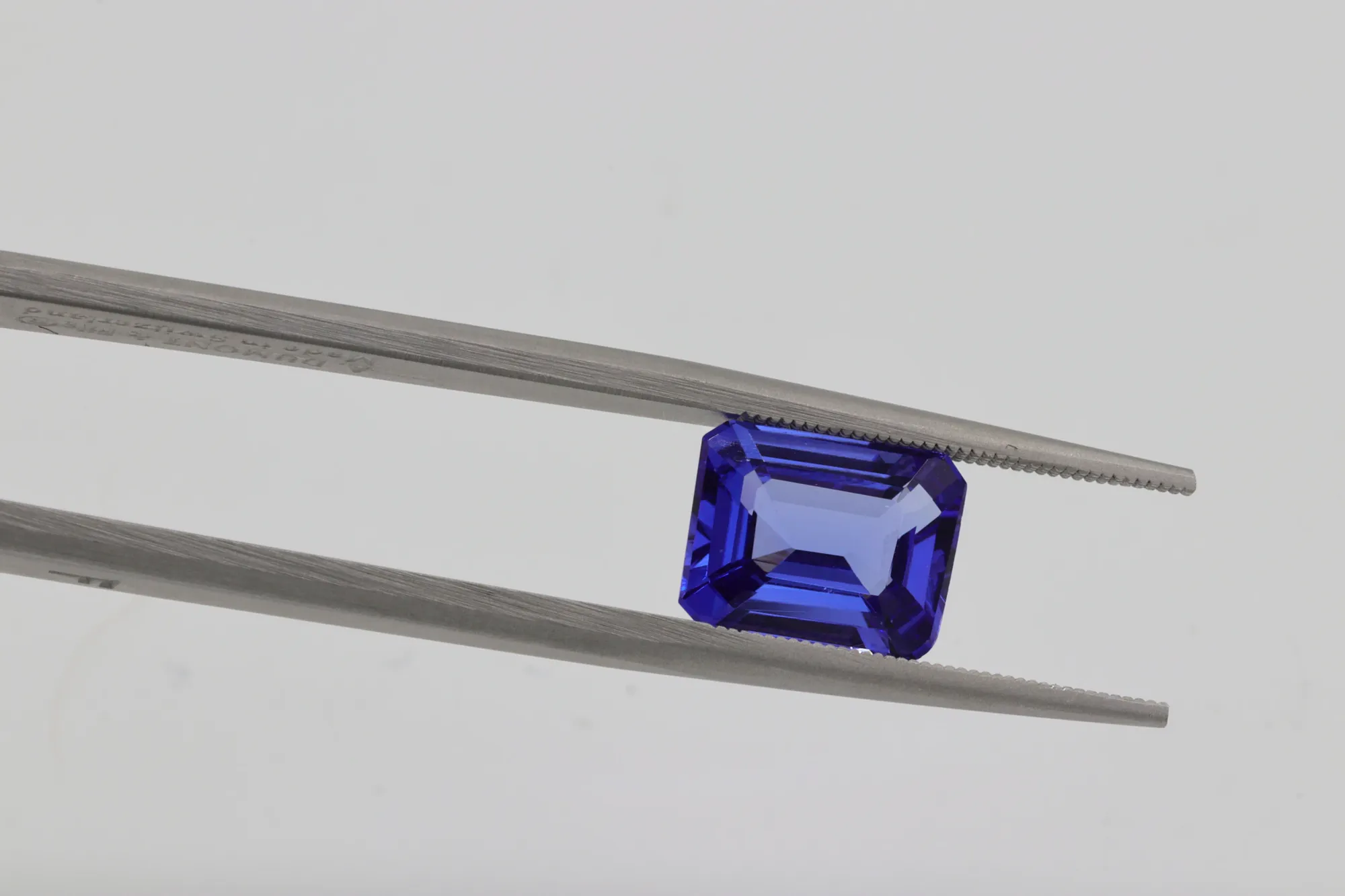
When it burst on the jewelry scene in 1968, tanzanite changed the direction of Tiffany & Co.'s style from "simple gold jewelry to colorful designs with large stones," Melanie Abrams wrote for The New York Times in 2018. Because of its less durable nature, tanzanite works well in special occasion jewelry or items that like necklaces and earrings. Better stones have more intense color and will weigh 5 carats or more. The bigger the stone, the more intense the color, the higher the value.

Like many gems, tanzanite does not have any specific industrial value, but it has an important place in the jewelry industry. There aren't many blue stones, especially with such vibrant color, and tanzanite does not have a synthetic counterpart. In 2002, the American Gem Trade Association chose tanzanite as a December birthstone, the first change to their birthstone list since 1912.
Sources include https://geology.com/gemstones/tanzanite/; https://science.howstuffworks.com/environmental/earth/geology/tanzanite.htm; https://doi.org/10.2113/gssajg.117.1.15; https://www.shimansky.co.za/discover-tanzanite/about-tanzanite/mining
